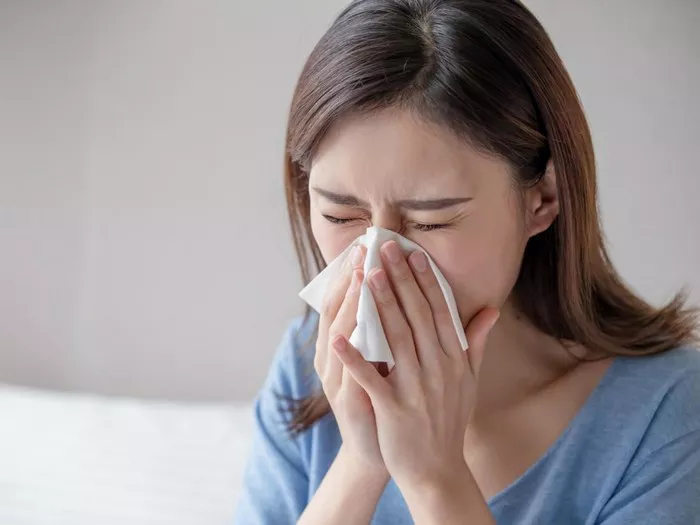Hair products are an essential part of many people’s daily routine. However, some individuals may experience an allergic reaction to hair products, which can be uncomfortable and even painful. Allergic reactions can be caused by a variety of hair products, including shampoos, conditioners, hair dyes, and styling products. In this article, we will discuss how to treat allergic reactions to hair products.
Identifying the Symptoms of an Allergic Reaction to Hair Products
The first step in treating an allergic reaction to hair products is to identify the symptoms. Allergic reactions to hair products can cause a variety of symptoms, including itching, redness, swelling, and hives. In severe cases, an allergic reaction can cause difficulty breathing and anaphylaxis, which is a life-threatening condition. If you experience any of these symptoms after using a hair product, it is important to seek medical attention immediately.
Stop Using the Hair Product
The first step in treating an allergic reaction to hair products is to stop using the product that is causing the reaction. This may seem obvious, but many people continue to use the product, hoping that the reaction will go away on its own. However, continuing to use the product can make the reaction worse and may even lead to a more severe allergic reaction. If you suspect that a hair product is causing an allergic reaction, stop using it immediately.
Wash Your Hair Thoroughly
After you have stopped using the hair product, it is important to wash your hair thoroughly to remove any residue that may be causing the allergic reaction. Use a gentle shampoo and conditioner that is free of harsh chemicals and fragrances. Be sure to rinse your hair thoroughly to remove all traces of the hair product.
Apply a Cold Compress
If you are experiencing itching, redness, or swelling, applying a cold compress to the affected area can help to reduce inflammation and provide relief. You can use a cold, damp washcloth or a bag of frozen vegetables wrapped in a towel. Apply the compress to the affected area for 10-15 minutes at a time, several times a day.
Use Over-the-Counter Medications
Over-the-counter medications can also be used to treat allergic reactions to hair products. Antihistamines, such as Benadryl, can help to reduce itching and swelling. Topical corticosteroids, such as hydrocortisone cream, can also be used to reduce inflammation and itching. However, it is important to use these medications as directed and to consult with a healthcare professional if you have any questions or concerns.
Seek Medical Attention
If you are experiencing a severe allergic reaction to a hair product, such as difficulty breathing or anaphylaxis, it is important to seek medical attention immediately. Anaphylaxis is a life-threatening condition that requires immediate medical treatment. If you have a history of severe allergic reactions, such as anaphylaxis, it is important to carry an epinephrine auto-injector with you at all times.
Preventing Allergic Reactions to Hair Products
The best way to treat an allergic reaction to hair products is to prevent it from happening in the first place. Here are some tips to help prevent allergic reactions to hair products:
Read the labels: Always read the labels on hair products before using them. Look for products that are free of harsh chemicals and fragrances.
Patch test: Before using a new hair product, perform a patch test. Apply a small amount of the product to a small area of skin, such as the inside of your elbow, and wait 24 hours to see if you have a reaction.
Avoid hair dyes: Hair dyes are a common cause of allergic reactions. If you have a history of allergic reactions to hair products, it may be best to avoid hair dyes altogether.
Use natural products: Consider using natural hair products, such as those made with essential oils and plant extracts. These products are often gentler on the skin and less likely to cause allergic reactions.
Consult with a Dermatologist
If you have a history of allergic reactions to hair products, it may be a good idea to consult with a dermatologist. A dermatologist can help you identify the specific ingredients that are causing your allergic reactions and recommend hair products that are less likely to cause a reaction. They can also prescribe medications to help manage your symptoms and provide guidance on how to care for your hair and scalp.
Consider Allergy Testing
If you have frequent allergic reactions to hair products, it may be a good idea to consider allergy testing. Allergy testing can help you identify the specific allergens that are causing your reactions, which can help you avoid them in the future. Allergy testing can be done through a skin test or a blood test, and can be performed by an allergist or dermatologist.
Take Care of Your Hair and Scalp
Taking care of your hair and scalp can also help to prevent allergic reactions to hair products. Here are some tips to help keep your hair and scalp healthy:
Wash your hair regularly: Regularly washing your hair can help to remove dirt, oil, and other irritants that can cause allergic reactions.
Use a gentle shampoo and conditioner: Look for hair products that are free of harsh chemicals and fragrances.
Avoid heat styling: Heat styling tools, such as flat irons and curling irons, can damage your hair and scalp, making them more susceptible to allergic reactions.
Protect your hair from the sun: Exposure to the sun can damage your hair and scalp, making them more susceptible to allergic reactions. Wear a hat or use a hair product that contains sunscreen to protect your hair and scalp from the sun’s harmful rays.
Conclusion
Allergic reactions to hair products can be uncomfortable and even painful. However, with the right treatment and prevention strategies, they can be managed effectively. If you suspect that a hair product is causing an allergic reaction, stop using it immediately and seek medical attention if necessary. By taking steps to prevent allergic reactions to hair products, you can keep your hair healthy and beautiful without compromising your health and well-being.
[inline_related_posts title=”You Might Be Interested In” title_align=”left” style=”list” number=”6″ align=”none” ids=”4443,4440,4446″ by=”categories” orderby=”rand” order=”DESC” hide_thumb=”no” thumb_right=”no” views=”no” date=”yes” grid_columns=”2″ post_type=”” tax=””]
































